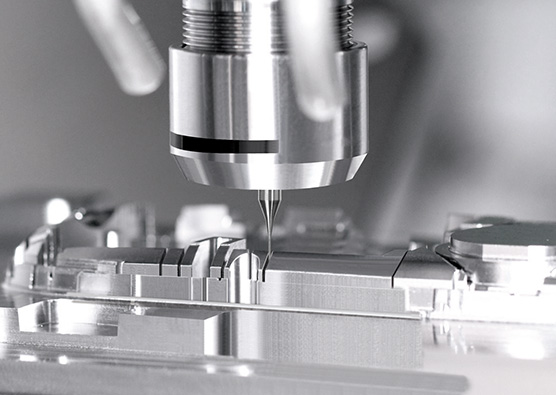 2025.06.27
2025.06.27
 Industry News
Industry News
In modern metal forming industries, especially in automotive, electronics, and appliance manufacturing, the demand for efficient and precise production of metal parts has grown steadily. One of the effective solutions for high-volume and complex part production is the Progressive Stamping Mold. Known for its multi-step design approach, the Progressive Stamping Mold allows multiple operations to be performed on a single strip of metal in a continuous process.
What Is a Progressive Stamping Mold?
A Progressive Stamping Mold is a type of stamping die that integrates several sequential metalworking processes into one tool. As the metal strip moves through the die, typically advanced by an automatic feeding system, it undergoes a series of forming operations such as punching, bending, coining, and drawing. Each station in the Progressive Stamping Mold performs a specific task, gradually shaping the metal into the final desired component.
This mold is mounted on a high-speed press, and with every stroke of the press, the strip is advanced by one station. Eventually, the finished part is separated from the strip at the last station. The Progressive Stamping Mold design is highly efficient for mass production, as it ensures continuous operation and minimizes manual handling.
Working Principle of Progressive Stamping Mold
The core idea of the Progressive Stamping Mold lies in its strip layout and station sequencing. The process begins with a coil of sheet metal fed into the die. At each step:
One or more punches perform operations like cutting or forming.
The metal advances by a fixed pitch distance.
Each workpiece accumulates modifications as it passes through successive stations.
By the time the strip reaches the final station, a fully formed part is ejected. All this occurs in one uninterrupted flow, which significantly improves throughput and consistency.
Key Benefits of Progressive Stamping Mold
The Progressive Stamping Mold offers several process advantages:
Multiple operations are combined in one tool, reducing setup and handling.
High repeatability is achieved, ensuring uniformity in mass-produced parts.
Material usage can be optimized through careful strip layout planning.
Compatibility with automatic feeding systems enables high-speed production.
While it has a higher initial design and manufacturing cost compared to simpler dies, the Progressive Stamping Mold provides significant long-term benefits in efficiency and output stability.
Difference from Single-Stage Dies
A common alternative to the Progressive Stamping Mold is the single-stage or single-operation die. In this method, each forming operation—such as punching, bending, or drawing—is completed separately using individual dies. This means the metal part must be moved between machines or dies manually or via automation.

The major differences are:
Efficiency: Progressive Stamping Mold handles multiple operations in a single press stroke, whereas single-stage dies require multiple steps and transfers.
Space & Labor: Progressive stamping setups are more compact and automated, reducing the need for manual handling or multiple machines.
Speed: Continuous production is faster with a Progressive Stamping Mold, while single-stage dies slow the process due to multiple handling steps.
However, single-stage dies may still be preferred for extremely large or simple parts where flexibility is prioritized over speed.
Comparison with Compound Dies
Another category is the compound die, which performs more than one operation in a single press stroke but usually at one station. For example, a compound die might punch and blank a part simultaneously.
Compared to the Progressive Stamping Mold:
Operation Scope: Compound dies are suitable for simpler flat parts, while Progressive Stamping Mold handles complex shapes involving multiple bends and forms.
Production Speed: Compound dies can be fast but are limited in complexity. The Progressive Stamping Mold allows much more detailed and progressive part shaping.
Design Complexity: The Progressive Stamping Mold is typically more complex in design, requiring careful planning of each station.
Applications of Progressive Stamping Mold
Due to its flexibility and efficiency, the Progressive Stamping Mold is widely used in:
Automotive: Clips, brackets, and terminals.
Electronics: Lead frames, connectors, and metal shields.
Household appliances: Structural supports, frames, and mounting plates.
Its ability to handle small-to-medium size components with consistent quality makes it a valuable tool in these sectors.
The Progressive Stamping Mold represents a significant advancement in metal forming technology, enabling multiple operations to be performed within one integrated tool. Compared to single-stage and compound dies, it delivers process efficiency, repeatability, and material optimization. As manufacturing industries continue to seek scalable and cost-effective solutions, the importance of Progressive Stamping Mold will only grow. Its role in shaping complex metal parts across various industries highlights its value in modern production environments.